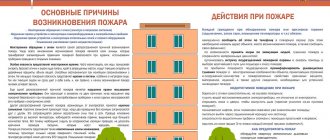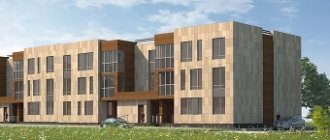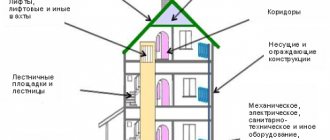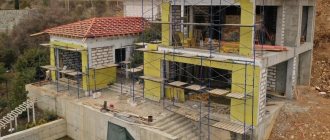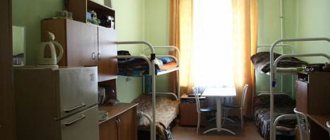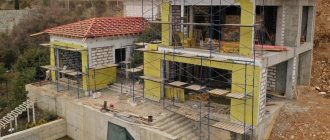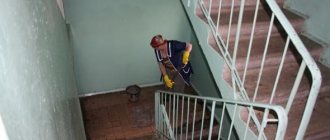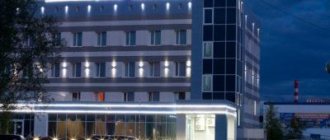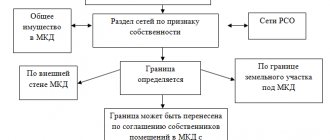In towns and villages, the main residential buildings are single-apartment residential buildings, despite the fact that multi-apartment residential buildings predominate in Russia. Accordingly, based on the total number of single-apartment residential buildings, as well as the complex of uniform violations of fire safety standards and regulations during construction (operation), the number of fires is large. Therefore, let us pay attention to fire safety issues of this type of building.
Multi-apartment residential building
Fire safety briefing
All employees must be explained how to behave to prevent a fire from happening, what to do and where to run if one suddenly occurs. The employer should not just tell about this, but periodically remind and check who has remembered the algorithm of actions.
Instruction is carried out in accordance with the programs developed in the organization.
Induction training is carried out for all new, seconded and seasonal employees. Fire safety rules are taught to student interns, repairmen hired under a civil contract, and other people as decided by the manager.
initial training at the workplace. During the instruction, they must practice the ability to use a fire extinguisher and other extinguishing means, and physically demonstrate what they will do during a fire.
Repeated training is carried out for all employees of the organization. Usually it is done once a year, more often in fire-hazardous industries.
An unscheduled briefing should take place if, for example, the organization updated equipment, there was an emergency, or a fire occurred in other organizations with similar production.
Targeted instruction is needed when carrying out one-time fire hazardous work. It reminds you of safe actions and warns against dangerous ones.
Each briefing is recorded in a special briefing log, where employees sign personally.
You can see how training should be carried out in the appendix to the Order of the Ministry of Emergency Situations of December 12, 2007 No. 645 and the Methodological recommendations for organizing training.
Repairs taking into account fire regulations
During repairs, you need to remember the fire safety requirements for the premises and move walls or rearrange furniture so that there are no violations in the end.
Attics, technical floors, basements
You cannot store furniture or products in attics, or set up workshops or production areas there. The same applies to technical floors.
Gas cylinders, goods in aerosol packages, and explosives cannot be stored in basements, except for the cases listed in regulations.
Balconies and stairs
There should be no things, furniture, or garbage in floor corridors, stairwells, on stairs and under them. Storerooms, closets or workplaces should not be made in this part of the room.
Doors, hatches, passages to adjacent sections on balconies must be free.
Balconies leading to smoke-free stairwells must not be glazed.
Walls
Evacuation plans should be posted on the walls if the building simultaneously:
- there are 50 people or more,
- employs more than 10 people.
In buildings, evacuation routes (doors) are always marked - signs, evacuation direction lines, and “EXIT” signs are attached to the walls.
How they should look and where to place them is indicated in GOST R 12.2.143-2009.
Emergency exit doors
Emergency exit doors cannot be removed. They must close so that they can be opened manually, without a key.
You cannot change the direction of their opening - escape doors must open outward (away from you).
There should be no turnstiles in doorways.
Window
The law does not define what windows should be and whether bars can be installed on them. This issue is resolved at the enterprise level.
But there is a conclusion of the expert council of the Ministry of Emergency Situations, which states that the organization can install opening or easily removable grilles in each room of the building, at the ends of the corridors, in the foyers of buildings, if the exit from them does not lead directly outside.
In rooms where there is no constant presence of people (warehouses, etc.), you can install ordinary grilles.
Floors
Floors near fire extinguishers, fire hydrants, and fire alarms must be clear.
There should be no thresholds, debris, or other things on the evacuation route.
Pay attention to the year the building was built. The size of doorways, for example, must comply with the building codes in force in the year of construction. And not modern.
But if you are carrying out major repairs or reconstruction, then follow the current fire regulations.
Answers on questions
Who checks the safety regulations in an apartment building?
Head of a housing maintenance organization - management company, homeowners' association, LLC, responsible for fire safety, fire supervision employees during scheduled, extraordinary fire safety inspections.
How often can there be inspections (according to the risk category) of management companies regarding industrial safety in an apartment building?
According to the “Regulations on the Federal GPN”, the categories are:
- There is a significant risk of fire and associated negative consequences in multi-apartment buildings whose height is more than 75 m.
- Medium risk – apartment buildings with a height of 28 m.
- Moderate risk - objects for simultaneous residence of more than 50 people, not classified in the previous categories, that is, apartment buildings with a height of less than 28 m.
Planning and carrying out inspections of multi-apartment residential buildings, according to the “Administrative Regulations of the Ministry of Emergency Situations of the Russian Federation for the supervision of compliance with industrial safety requirements”, is carried out with the frequency:
- For objects of significant risk – 1 time/4 years.
- Medium risk – 1 time/7 years.
- Moderate risk – 1 time/10 years.
The Ministry of Emergency Situations, which carries out fire supervision over the property of the Russian Federation, no later than 10 days before the beginning of the next year, publishes an annual inspection plan on the website, which allows the managers of the management company, HOA, LLC, and other organizational and legal forms of association of apartment owners in multi-storey buildings to find out information about the inclusion own objects to this list.
You should know: in addition to scheduled ones, extraordinary/unscheduled inspections of the fire safety condition of apartment buildings may be carried out:
- In connection with complaints/statements from citizens, entrepreneurs, and legal entities about violations of industrial safety requirements.
- By decision of the authorities, the prosecutor's office.
- Due to high-profile fires with mass deaths that occurred in apartment buildings.
If the house has an HOA, who is responsible for the safety and security of the property?
The head of the HOA, officials appointed by order to be responsible for the safety of individual residential buildings and premises.
Are there any general safety requirements and standards for wheelchairs?
If we are talking about a room in an apartment building that is specially designed for storing baby strollers, bicycles, and wheelchairs for people with disabilities, then the only PB requirement is that the stroller be used for its intended purpose, without cluttering it with foreign combustible objects.
If we talk about installing strollers on stairwells, landings, in floor corridors, in elevator halls, under flights of stairs, then such actions are strictly prohibited by the requirements of paragraph 23 of the “PPR in the Russian Federation”, since a significant part of the design of any type of strollers and bicycles is made of flammable materials. In addition, this leads to blockage of evacuation routes and exits.
Equipment for primary extinguishing agents
The primary means of extinguishing are fire extinguishers, fire hydrants, fire equipment, blankets to isolate the source of fire (feather blanket). They are used when the fire has just started or the fire is small.
Until September 2021, the fire regulations contained a sign with recommendations on how many fire extinguishers to install depending on the area of the facility.
Later, the rule was changed - fire extinguishers must now be selected depending on the fire extinguishing ability (extinguishing rank of the model fire), categories of premises according to fire and explosion hazard, as well as the class of fire (clause 465 of the Fire Safety Rules).
Fire shields are installed in two cases:
- there is no fire-fighting water supply or automatic fire extinguishing system inside the building,
- there are no hydrants or fire-fighting tanks outside the building, or they are located more than 100 m from it.
How many fire shields there should be and what they should be equipped with is indicated in Appendices 5, 6 to the Fire Safety Rules.
Individual one-apartment residential buildings
If in single-family houses the minimum areas and composition of premises, as well as their design (fire safety, functional, planning) decisions are made in accordance with construction and sanitary standards, then in private buildings these issues are most often determined by the owners themselves. As a result, two/three-story residential buildings built without taking into account the requirements of the standards, which do not have fire safety certificates and do not comply with fire breaks, pose a real threat to buildings and structures on neighboring landholdings.
Single-family residential building
Kinds
- Detached houses.
They consist of one apartment or one autonomously located residential block with separate life support systems connected to external networks, and are also not connected in any way to neighboring buildings. Such houses/blocks consist of a complex of residential, utility and auxiliary premises. Depending on the time of construction and design features, such buildings are called guest houses, huts, cottages, mansions, villas.
- Blocked houses.
In a general development, which includes 2 or more attached autonomous low-rise residential blocks with independent access to separate plots of land, such single-apartment houses are called block / townhouses, blocked cottages. In addition to residential and utility premises, single-apartment buildings can include built-in (added) garages for passenger vehicles, as well as public facilities intended for business activities by the people who live in them - shops, hairdressers, and other service enterprises.
Design elements
In the construction of single-family houses, a wide range of ready-made building structures is used - from slabs, floors, flights of stairs, piece materials - brick, stone, sand-cement blocks; to wood processing products - hewn logs, timber, boards. Both flammable materials - sawdust, various types of foamed plastics, and non-flammable materials - perlite, vermiculite are used as insulation materials.
For interior decoration, materials of varying degrees of flammability are also used:
- Wood products - chipboard, fiberboard, plywood.
- Materials made from mineral raw materials - mineral wool, regular/fire-resistant plasterboard, basalt slabs.
- Wallpaper, linoleum, ceramic tiles for finishing floors, walls, partitions.
- Sheet, slab, wide-roll materials, as a rule, are poorly flammable for creating hemmed, suspended, and stretch ceilings.
- Wooden beams, boards, and rarely metal structures are mainly used as rafter structures and sheathing for the roof of buildings.
- Roofs are made from combustible rolled, piece materials - roofing felt, bitumen tiles, and fireproof elements - metal, slate sheets of various profiles, ceramic tiles.
Fire resistance
According to fire resistance, such residential buildings are:
- III degree , in which the main enclosing elements are made of reinforced concrete structures, bricks, ceramic blocks, or combustible materials that have undergone fire retardant treatment to increase the fire resistance limit to the values required by standards.
- IV degree , load-bearing structures are made of wood, metal, and exclusively non-combustible materials are used as protective coatings and external/internal insulation, which somewhat increases the fire resistance of such residential buildings.
- V degree , the lowest fire resistance, built entirely from combustible materials. Examples include both wooden houses made of logs and buildings made of timber.
In practice, houses of III degree of fire resistance can most often be found in typical developments of suburban elite settlements, and V - in villages, dacha associations, where many buildings are currently being converted into permanent housing.
Single-family houses of IV degree of resistance to flame are quite rare, since such structures are more of a temporary housing option than a permanent one, due to low energy savings during the cold period, short service life as a result of biological destruction, and loss of load-bearing capacity.
Regulations
The main regulatory act that contains industrial safety requirements for the design, construction, operation, and reconstruction of single-apartment, detached or interlocking residential buildings with a height of no more than three above-ground floors . And also for houses in which non-residential premises for public, agricultural and industrial purposes are built (attached) - this is SP 55.13330.2016.
You should also follow the instructions:
- SP 42.13330.2016 – on planning and development of cities and towns.
- SP 2.13130.2012 – on ensuring fire resistance of construction projects.
- SP 6 and 7.13130.2013 – on industrial safety requirements for electrical and heating equipment, respectively.
- The rules for compliance with fire safety regulations during the construction and operation of residential buildings are set out in the “PPR in the Russian Federation”.
Enterprise fire safety inspection
From time to time, the head of the organization or a person appointed by him must check how the occupational safety system works at the enterprise - whether the sensors are in working order, whether the extinguishing agents are expired, whether all documents are drawn up.
According to Fire Regulations:
- The enterprise must have approved instructions on fire safety measures, instructions on the actions of personnel to evacuate people in case of fire (if the organization has many visitors).
- It is necessary to seal holes and gaps at the intersections of fire barriers (item 22).
- Fire escapes need to be checked every 5 years (clause 24).
- Before the start of a corporate party or discotheque, the manager must check the premises for compliance with fire safety measures and appoint a person on duty who will monitor safety (clause 30).
- The New Year tree must be placed so that there is a distance of at least 1 m from its top to the ceiling and branches to the wall (clause 31).
- If there are 50 or more people in the building, the manager must ensure the availability of electric flashlights. This location must be indicated in the evacuation plan (clause 38).
- Carpet runners should be attached to the floor (item 39).
- Computers, if there is no staff on duty, must be turned off at night (clause 40).
- Do not use faulty electrical devices or wires (clause 42).
- Ventilation systems must not be sealed or burned off with dust and accumulated dirt. They need to be cleaned once a year (sections 48, 50).
- The valves of garbage chutes and laundry chutes must be in good working order (clause 53).
- Twice a year you need to check the serviceability of fire hydrants. They should be repaired, cleared of snow and dirt, and if the pressure in the water supply network has dropped, report this to the fire service (clause 55).
- Fire hoses need to be rerolled once a year (clause 57).
- Twice a year it is necessary to check the performance of electric valves installed on the bypass lines of water metering devices (clause 59).
- The water supply intended for fire extinguishing cannot be used for other purposes (clause 60).
- It is necessary to carry out maintenance and scheduled preventative repairs of fire protection systems of buildings according to the drawn up schedule (clause 63).
- If the fire protection system breaks down, then the manager must create a control center (clauses 64.65).
- The manager must monitor the serviceability of all fire-fighting elements - fire extinguishers, equipment (68, 70).
Responsibility for violation of fire regulations
The law does not say in which cases the organization is responsible for failure to comply with fire safety requirements, in which cases the manager, and in which the occupational safety specialist.
It also does not say when the landlord is responsible for a violation and when the tenant is responsible.
If this point is not regulated by the lease agreement, then usually the one who committed the illegal act bears responsibility.
But in fact, all or one of them may be held liable at the same time - this is decided by the State Fire Supervision Inspector.
Fines for violation of fire safety rules are listed in Part 1 of Art. 20.4 Code of Administrative Offences:
- for a citizen 2000-3000 rubles,
- for the head of the organization 6000-15000 rubles,
- for individual entrepreneurs 20,000-30,000 rubles,
- for organizations 150,000-200,000 rubles.
Some courts believe that the person responsible for ensuring fire safety requirements can be determined by agreement - the tenant or the landlord. Those who disagree with the inspector’s decision can appeal his decision in court, but we must remember that judicial practice in this matter is ambiguous.
Others, that despite the division of responsibilities, the owner of the building is still responsible for violating fire safety rules (see Resolution of the Federal Antimonopoly Service of the West Siberian District dated August 13, 2013 No. A27-21023/2012).
